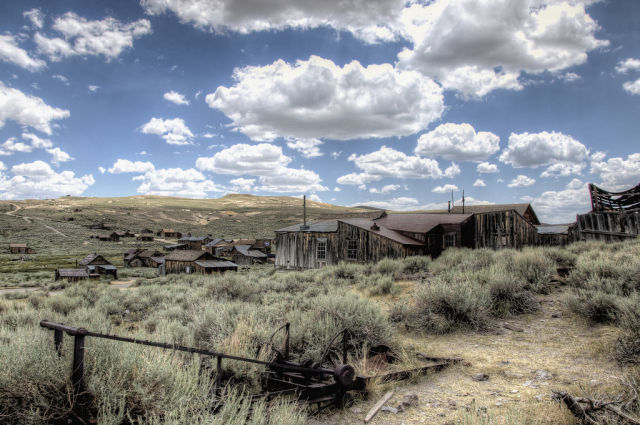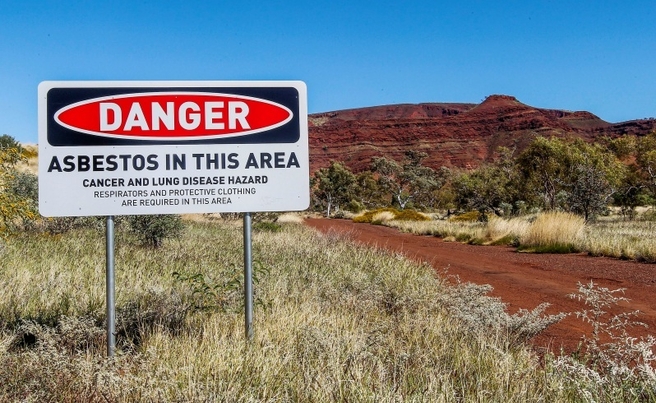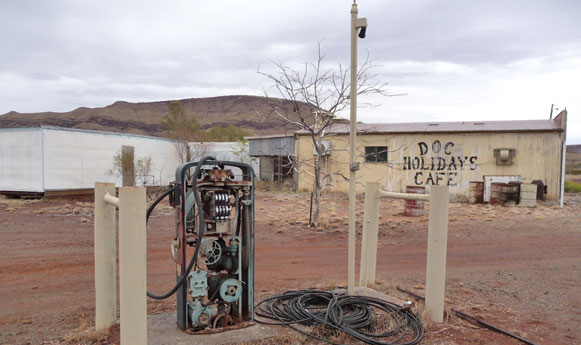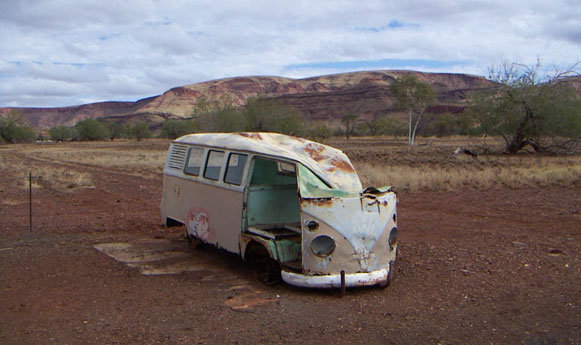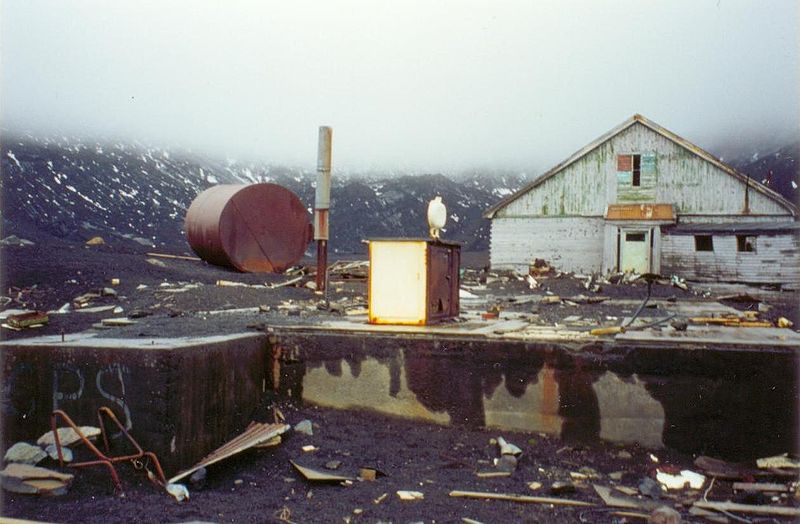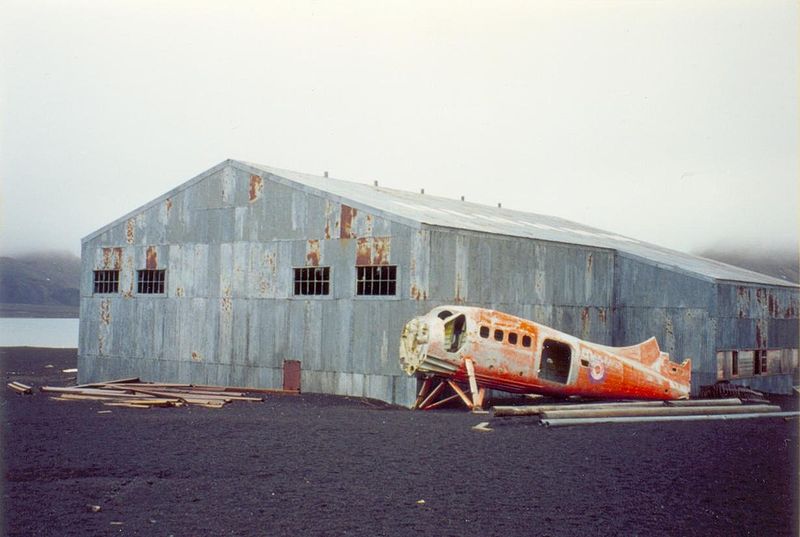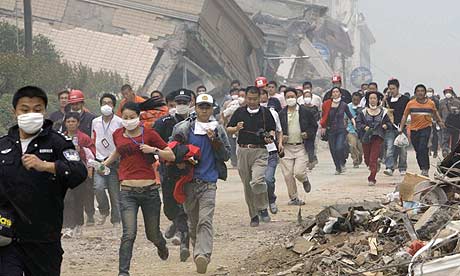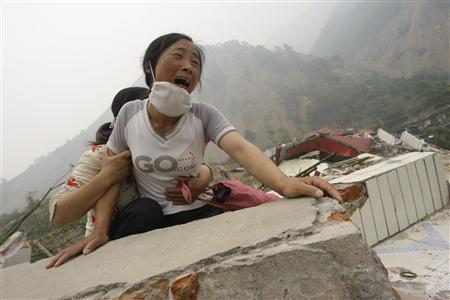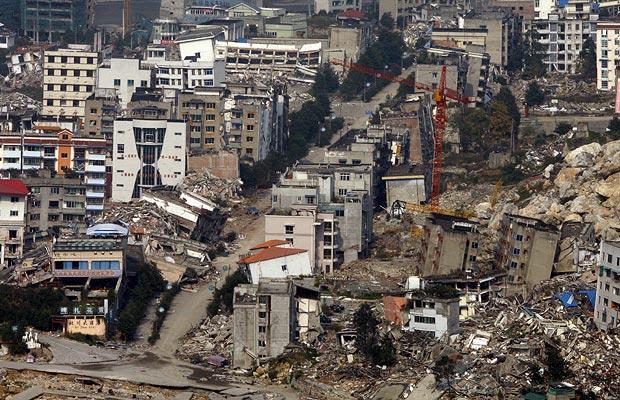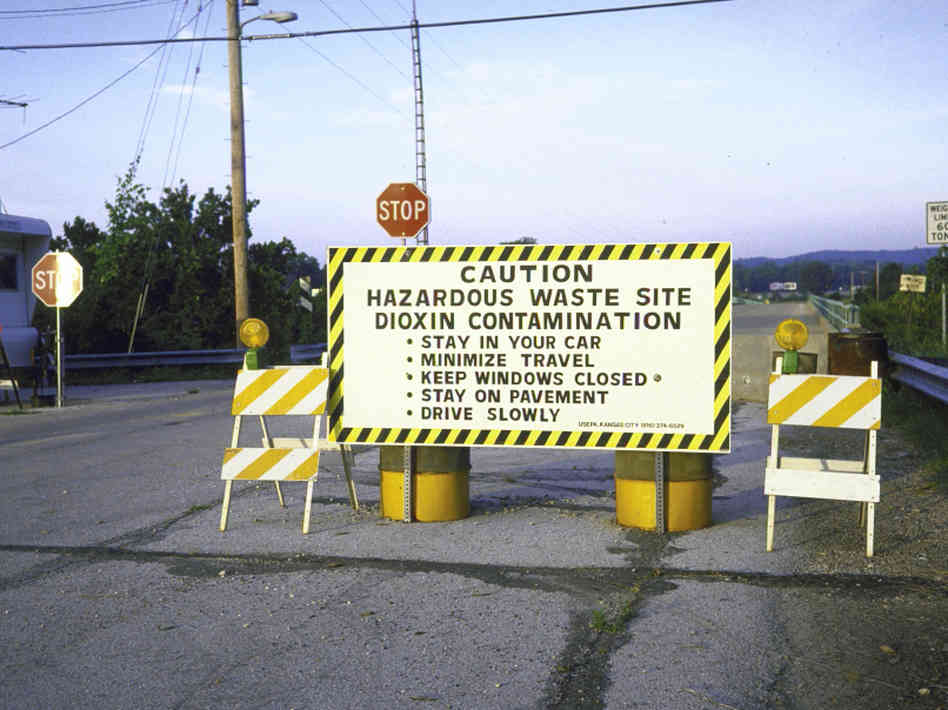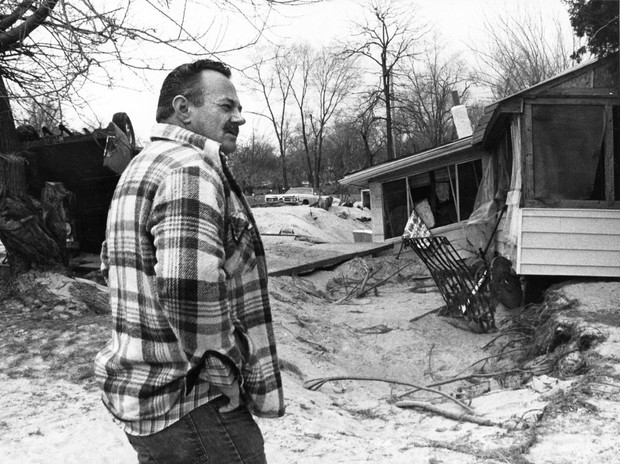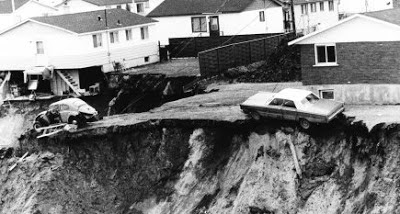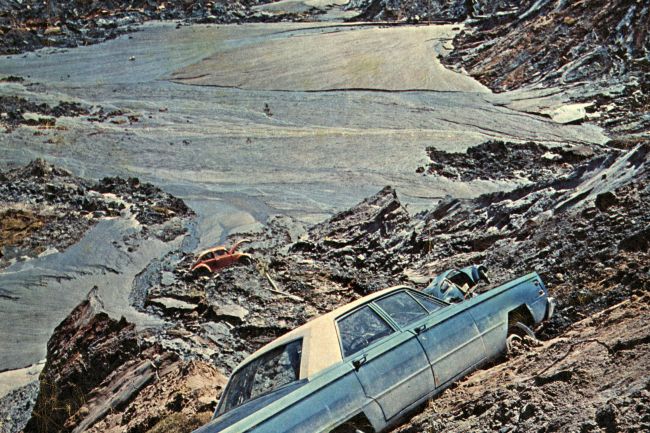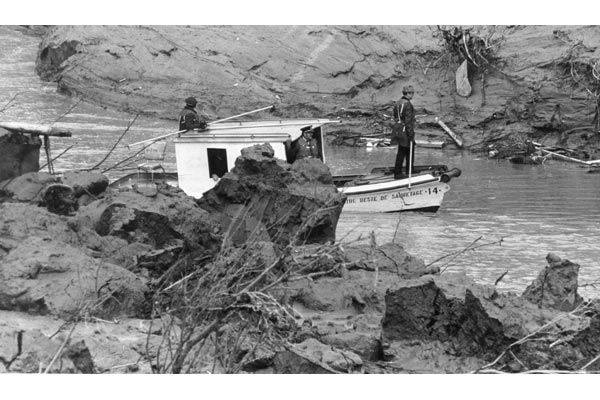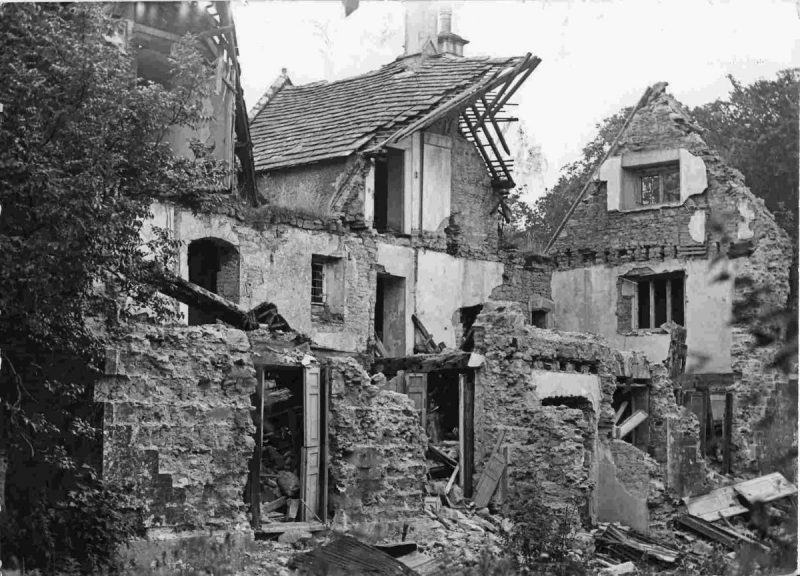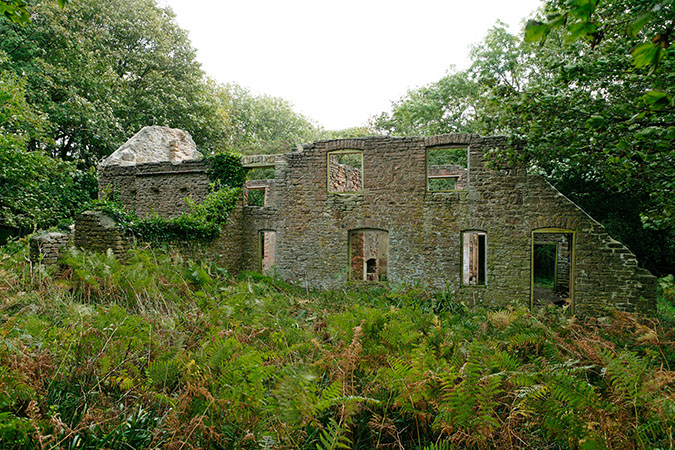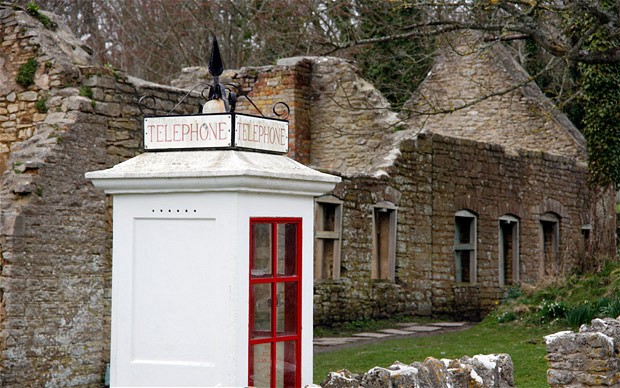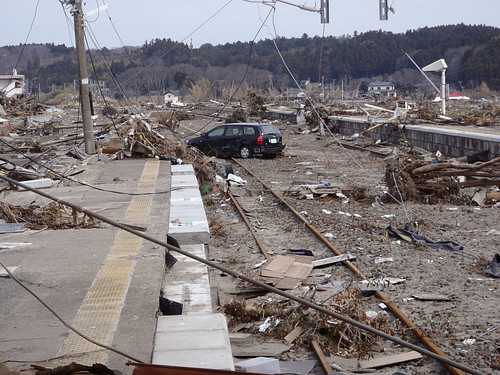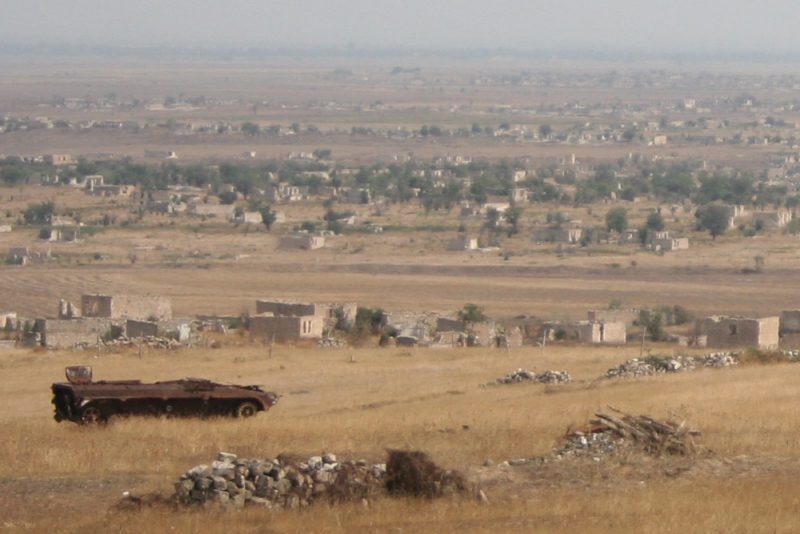It must be mystery for some of us why there are places on earth that had became ghost towns. And this article could be very helpful on answering those questions that you still bear in mind.
HERE ARE THE 10 ABANDONED PLACES IN THE PAST THAT REMAINED GHOST TOWNS UNTIL TODAY
1. Wittenom, Western Australia
A warning sign on the entrance of the abandoned town. [Via]
Wittenoom is a town located in Western Australia. It was originally established in 1947 to accommodate mine workers working at the crocidolite mine nearby. As time goes by, the mine operation began to grow resulting to an increase of the town’s population. Wittenoom was a home of over twenty thousand people before it was abandoned in 1966.
Wittenoom residents were very creative and resourceful. They used the dirt extracted from the mines to make sandpits as children’s playground, footpaths, “beach” next to the town’s pool and many other things to be mentioned. But sadly, the townspeople had no idea of what they were doing. The Crocidolite they were mining is known as these days as “Blue Asbestos”, the most dangerous of its kind to the human health. A person who inhaled the substance could be acquire malignant mesothelioma, a rare type of cancer which develops withing the linings of organs particularly in the lungs and heart.
It was once a lively town. [Via]
Due to the very alarming effects of the blue asbestos, health specialists warned the residents in the area. However, their concerns were ignored by the mine owners operating in the site. And because of the people concern, the mine was finally closed in 1966. After the mine stopped the operation, several air surveys were conducted and found out that every building in the town has a presence of asbestos particles. In 1979, the government took an action by offering the townspeople houses and paying their relocation costs. Many people took this offers and left their homes to be demolished. But a few number of residents had stayed despite of the isolation they are experiencing, such as removal of all road signs , official removal of the town’s status and disconnection of the electric grid.
An old abandoned car in Wittinoom. [Via]
Record shows that out of twenty thousand people who lived the town, over thousand death from asbestos-related illnesses has been recorded. Because of this incident, Western Australia suffered the highest rate of malignant mesothelioma all over the world.
2. Deception Island, Antarctica
[Via]
Deception Island is part of the group of islands known the South Shetland Islands, situated 75 miles north of Antarctica. Though naval expedition in the early 19th century, the British had founded the island, in which it became the host to a booming industry of whaling on the early 20th century. In the year 1914, whale blubber processing plants become 14 which were owned by various nations, such as Norway and Chile. However, the whaling industry had fall after the Great Depression. For this reason, whaling plants had became unprofitable resulting to its first abandonment.
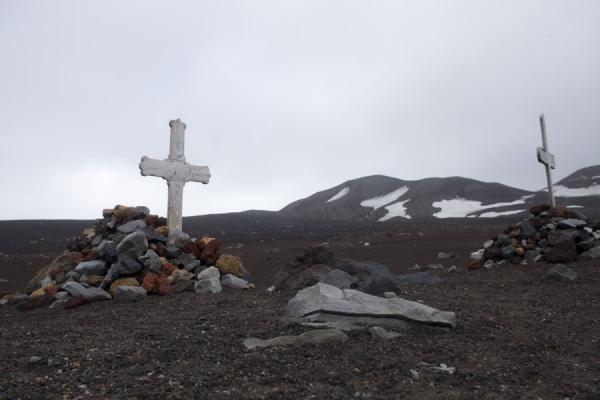
In 1944, a permanent scientific base was constructed on islands by Britain, which was the followed by Chile after 10 years. However, volcanic eruptions in three consecutive years (1967, 1968 and 1969) caused the destruction of the bases, forcing the two nations occupying the islands leave.
Because of the disaster happened to the island, there was permanent residents living the area, and it became a host of the thriving tourist trade. The scientific bases established in the island has now become a tourist spot, in which exploration of the left overs such as the ruined building, scientific research stations, aircraft hanger and other things that were left behind has became a gimmick.
This aircraft hanger is still displayed as you visit the island. [Via]
3. Beichuan, China
In May 12, 2008, an earthquake with an intensifying magnitude of 8.0 hit the province of Sichuan in China. The terrifying incident killed a huge number of more than 69,000 people and leave 374,000 injured people. The earthquake caused great destruction leaving between 5 to 11 million people homeless .
One of the worst-hit town of province was the town of Beichuan which is located in the northern part. Eighty percent of the buildings that stood in the town had collapsed during the horrific earthquake.
Townspeople of Beichuan running away from their home. [Via]
Instead of demolishing the ruins of Beichuan, the government thoughtfully agreed in preserving the town as a museum. By the use of modern technology, freezing the site in a condition caused by the earthquake would be the scene.
A mother seeking his child after the traumatic experience. [Via]
The scene after the terror. Sichuan province has crumpled down.[Via]
Instead of demolishing the ruins of Beichuan, the government thoughtfully agreed in preserving the town as a museum. By the use of modern technology, freezing the site in a condition caused by the earthquake would be the scene.
4. Times Beach, Missouri (United States of America)
A caution sign before entering the town of Times Beach, Missouri. [Via]
Times Beach is an abandoned town in Missouri, United States of America. Like any underdeveloped town in the early 1970s, Times Beach had also faced most common problems, particularly the massive amount of dirt swirling the place due to the unpaved roads. Travelers and Residents of the town often encountered problems such as dirt covering the cars and pedestrians which had resulted to most road accidents in the area. Because to the increasing concerns, the town wanted to end such issues by oiling the roads. As a result they hired a company named Russell Bliss which was a waste hauler.
However, without knowing, the company the town hired took another contract with ICP at the same time, requesting to a disposal of toxic waste from Northeastern Pharmaceutical and Chemical Company (NEPACCO). NEPACCO was one of the manufacturer that provided the U.S government of the infamous Agent Orange, a defoliant containing the dioxin, TCDD. The dioxin TCDD was known to cause immune and reproductive disorder, cancer and chloracne.
For years of oiling the roads of Times Beach, nobody knew what Russell Bliss had been doing, the waste collected from NEPACCO and some used engine oil was the mixture applied on their roads. It was December 3, 1982, due to some environmental concerns, an investigation was conducted in the area by the Environmental Protection Agency (EPA). The agency took samples of soil from the town, and they discovered a high level of dioxin contamination from the soil, a level hundred times dangerous to human health.
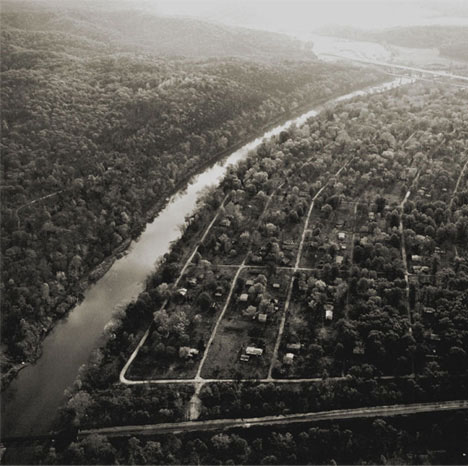
However, a very unfortunate event happened before any action could be taken. On December 5, 1982, the Meramec River near the area had overflowed and flooded Times Beach spreading the contaminant all over the whole city.
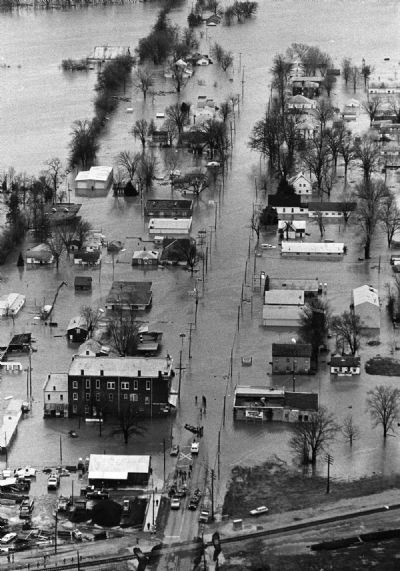
In 1983, as the floodwaters receded, the EPA declared a forced eviction on the residents of town and reclaimed the land which cost the state of a reported $32 million to the buyout.
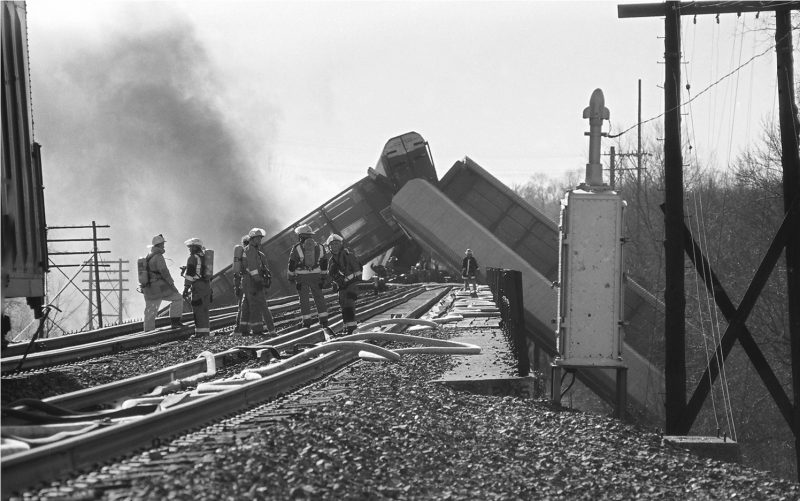
Demolition of the houses and soil clean-up took place by 1985. All the town’s soil had been bulldozed and burnt in a specially-built mobile furnaces.
-
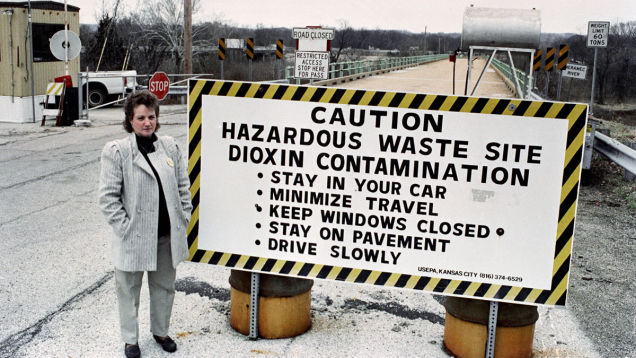
- A recent of photo of Times Beach. A woman standing beside the caution signage near the town’s entrance. Via
The EPA reexamine the Times Beach’s soil in 2012, and found out that the presence of contaminant was no longer in the area. And today, the site where the town stood has become a state park.
Bob Taylor, a resident of the town visiting his parent’s home after floodwater receded on Aspen Drive, Times Beach. The picture shows the moved house foundations of Bob’s parent’s home. His pickup truck was strongly pushed against the tree making its position upside down. And due to the incident, his auto-repair business became non-profitable. [Via]
5. Saint-Jean-Vianney, Quebec Canada
A traumatic scene as the earth devoured the lives and houses living in the area. [Via]
Before the catastrophe happened, the townspeople had made various reports on mysterious occurrences, such as to the appearance enormous cracks on the streets and driveways, sinking of their house’s foundation and hearing a heavy banging sound from the underground.
Despite of the indication that landslide would hit the place, most of the townspeople had struggled evacuating the town which had became a reason to fall into the abyss being helpless. There were 31 people killed five minutes before the occurrence of the landslide, and a high number of death would be a figure if the incident happened later at night. Since not the whole town was consumed by disaster, there were still residents left in the village and later chose to be rehoused in the nearby city of Arvida due of the risks living in that area.
A rescue unit on a boat seeking for survivors.[Via]
6. Tyneham, Dorset (United, Kingdom)
“Please treat the church and houses with care; we have given up our homes where many of us lived for generations to help win the war to keep men free. We shall return one day and thank you for treating the village kindly.”


7. Gilman, Colorado
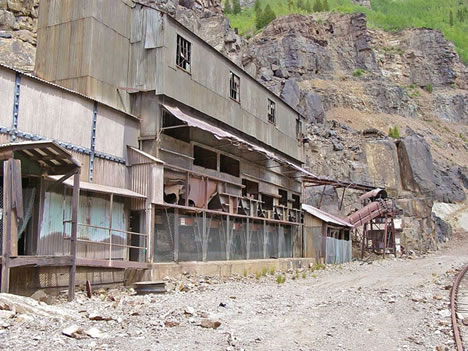
Home of the Eagle Mine, the town of Gilman was one of the remarkable asset in the state of Colorado. Its operation had opened since 1886. Because of the booming mining industry of the town and the enormous reserves of zinc and lead, the mines of Gilman did not only provide wealth to the state, but it had also filled thousands of bellies to the mine workers and their families. During World War II, an exemption of the military draft was given to the miners, since the minerals they were mining was crucial to the war effort of the country. And in 1977, the mining operation in the area was closed due to the shrunken demand of the minerals and financial problems.
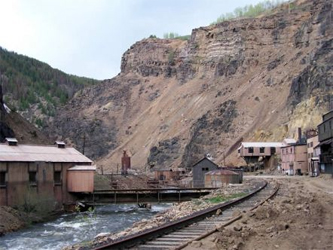
[Via]
Since the mine was closed, the mine operator had also turned off the mine’s dewatering pumps that stopped the lead and zinc from washing into the groundwater. As a result, floodwater ran into the deepest parts of the mine and washed away the chemicals into the river nearby, the Eagle River. People living in nearby area considered the river as the main source of their drinking water. Before things got worse, the Environmental Protection Agency (EPA) had responded by taking control of the mines and of Gilman. The agency had declared the entire place to be a Superfund site, and forced the townspeople to leave the area. Decontamination of the hazardous chemicals on the site was carried out, however, it remained closed until these days.
Because of the disaster happened, the townspeople did not returned to their houses in Gilman and the town has remained a Ghost town until today. [Via]
-
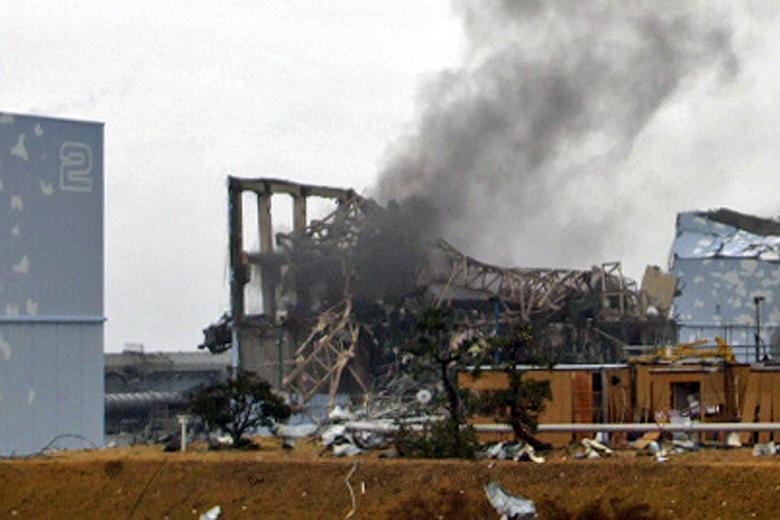
- On March 11, 2011, a smoke was seen on the nuclear power plant of Fukushima Daiichi after the devastating tsunami hit the region of Tomioka. A district in Fukushima located in northeastern Japan. Via
8. Tomioka, Fukushima (Japan)
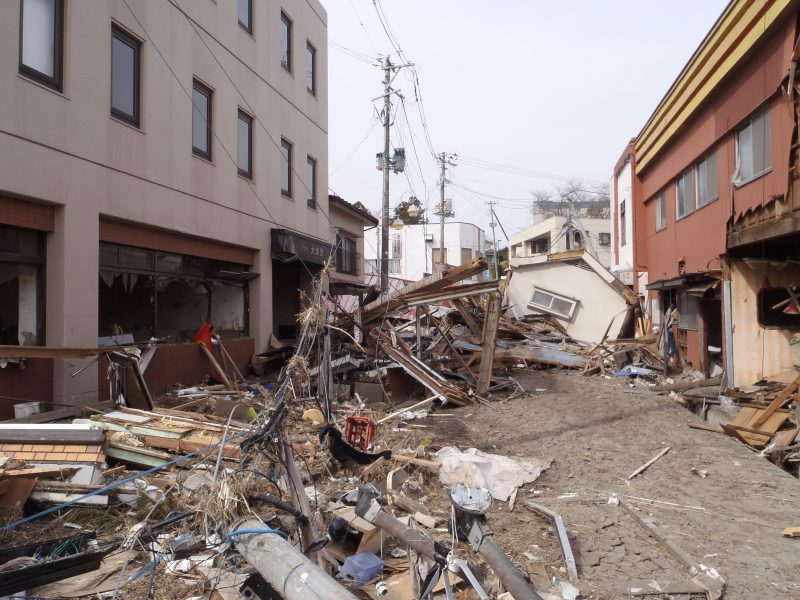
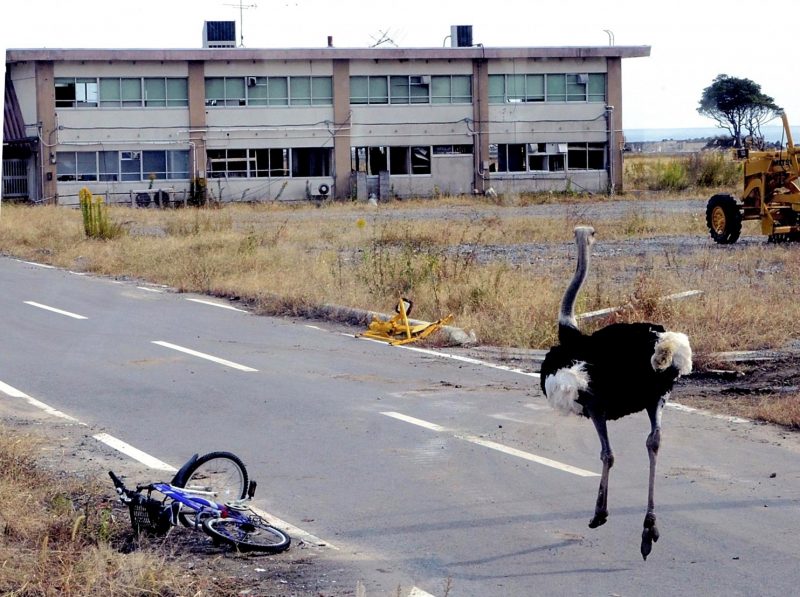
Is this town has already been a wasteland? [Via]
9. San Juan Parangaricutiro (Mexico)
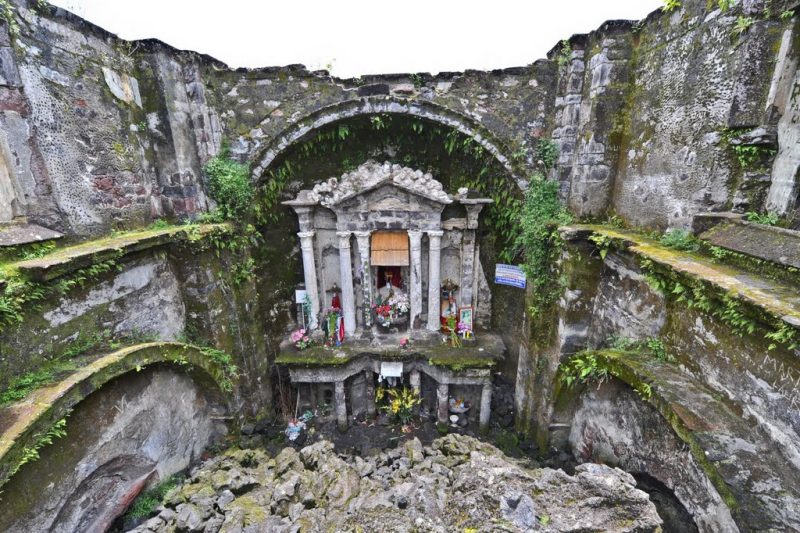
In 1944, a very horrific event to end the year as the village of San Juan Parangaricutiro in Mexico San faced the dreadful rage of nature when the Paricutin volcano had erupted. As a result, the villages nearby had been buried under the roaring tide of the volcano’s lava and ash, which only left a single visible structure, the church tower of San Juan Parangaricutiro.
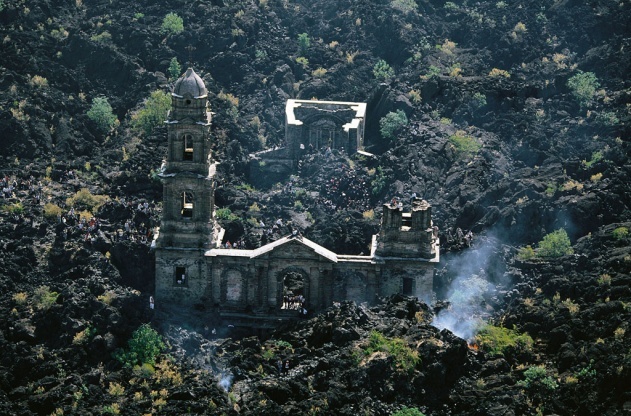
Today, the entire church has stick out of the cooled lava and the on remains left by the disaster and the remembrance of the town’s existence. The volcano didn’t full blast its wrath as it brought a devastation in the town, a slow eruption has continued for another 9 years before it stopped in 1952.
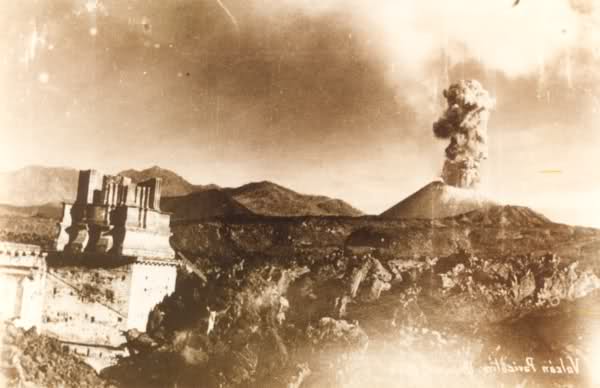
10. Agdam (Azerbaijan)
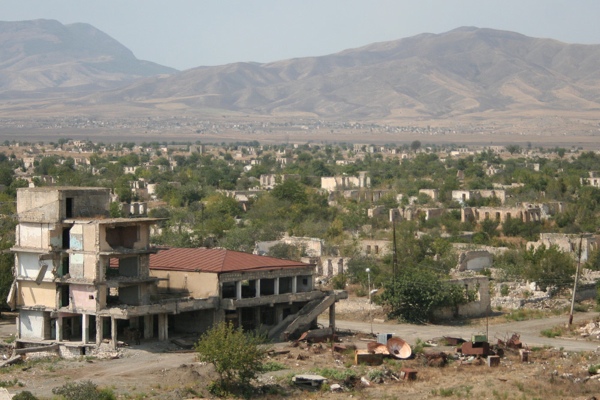
By July 4 on the same year, the Armenian forces launched a terrorizing artillery strike to the city which had led into a mass evacuation of Agdam’s townspeople. Ending the July was also the end of Azerbaijan’s control to the city. During rule of the Nagamo Karabakh, multiple violations on the rules of war were committed, such as hostage-taking and forcible displacement of the town’s residents. When they heard the full-force counter-attack plan from the Azerbaijan forces, an order for Agdam’s destruction was initiated by the group just to prevent city’s recapture.
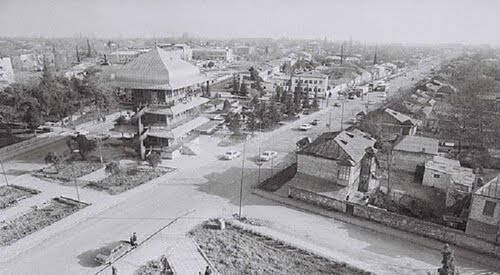
Due to the horror war brought to the city, the ruins of Agdam act as a buffer zone between two groups in conflict. It only means that the permanent reoccupation of the city is still impossible up to this time.
